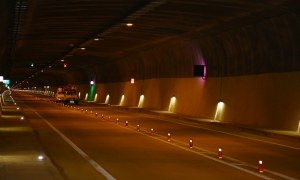🕑 Reading time: 1 minute
There are several factors that influence the magnitude of lateral pressure of fresh concrete on formwork sides. For instance, concrete weight, rate of placement, vibration, the temperature at the time of pouring, chemistry, and slump. Formwork designers need to take these factors into considerations during the design process. The freshly placed concrete behaves temporarily like a fluid, producing a liquid pressure that acts laterally on vertical formed surfaces.
The designer may need to set certain concrete placement conditions in order to limit the detrimental influence of some factors such as setting a certain rate of concrete placement. Rapid vertical placement can result in a full liquid pressure for the entire depth. However, when the rate of placement is slow, concrete at the bottom of the form begins to stiffen. Consequently, the lateral pressure is reduced to less than full liquid pressure by the time concrete placement is completed in the upper parts of the form
Contents:
1. Weight of Concrete
The unit weight of concrete directly influences the lateral pressure of fresh concrete imposed vertically on the formwork surface. The lateral pressure is equal to the concrete's unit weight times the depth or fluid or plastic concrete.
However, if the concrete slump is 175mm or less, then maximum lateral pressure is equal to the temperature of concrete during placement times rate of placement times unit weight coefficient which can be obtained from ACI 347-04.
2. Rate of Placement
Initially, the rate of concrete placement affects lateral pressure, but this influence decreases as concrete stiffens and/or consolidated. This because stiffening and consolidation make concrete to support itself. Maximum lateral pressure is proportional to the rate of placement up to a limit equal to the full liquid pressure. The rate of placement is the average rate of rise of the concrete in the form.

3. Vibration
Internal vibration leads to an increase in lateral pressure temporarily by 10 to 20%. This is because it makes fresh concrete to behave like a liquid for the full depth of vibration.
Therefore, forms should be designed to withstand the greater pressure and depth of vibration must be controlled during concrete placement. Re-vibration and external vibration generate greater loads on forms compare with internal vibration.

4. Concrete Temperature
The temperature of concrete during the placement affects the lateral pressure greatly because it is one of the factors that govern concrete setting time. When the temperature is low, a greater amount of concrete can be poured before fresh concrete at a lower portion of the form stiffens and support itself.
This leads to an increase in liquid head depth which results in higher lateral pressure. That is why cold weather needs to be taken into consideration while forms are designed.
5. Concrete Slump
Slump is a measure of concrete workability. The slump of ordinary concrete does not create much influence on lateral pressure. However, when self-consolidating is used in construction, the full liquid head should be used to evaluate lateral pressure of fresh concrete on forms.
6. Concrete Chemistry
Cement type, use of retarding admixtures, and use of fly ash or slag cement as a cement replacement can all have a significant effect on lateral pressure. ACI 347-04 provides chemistry coefficient to account for the influences of these components. For instance, the chemistry coefficient for type I, II, and III Cement without retarders is 1, whereas for type I, II, and III Cement with retarders is 1.2.



